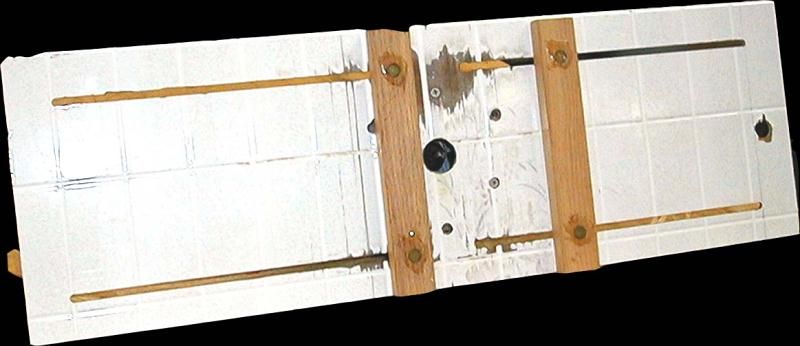Grit Selection for a Wide-Belt Sander
Advice and experience about sandpaper and the sanding sequence. June 29, 2005
Question
We just got a new wide belt sander and are trying to figure out which grit to use. We ran a few test raised panel doors through, starting with 80, then 120 and finished up with 150. This did not give me the surface I was looking for. I am debating on starting with 100, then 150 and finishing with 180 or 220. I would like to hear what everybody else uses for grit sequence.
Forum Responses
I start sanding with 120 grit paper and carefully eliminate any working marks - from tooling, scrapers, etc. After this I wet the entire piece to raise the grain. When this is completely dry (generally a matter of an hour or so, although I often wait until the next day), I sand again with either 150 or 180 grit paper and wet the piece again. I then complete the sanding of the raw wood with 220 grit paper. This is a good point to do a very careful quality control inspection of the piece. Any glitches, nicks, scratches or the like must be fixed at this point.
A friend of mine has a timesaver double header. He swears by running 120 on the first head and 150 on the second. He says if he sands any finer than 150 it makes it harder to get the cross grain scratching out of woods like maple and cherry. If just sanding with the grain, I would probably stop at 180. With a lacquer finish, you won't see any difference by sanding finer than 180. With oil and wax finishes, there is luster to be gained going finer than 180.
We have a double head, but the sequence would be the same with a single also. We use 80, 120, 150, 180, a final pass with 180 with the platen down. We find 180 to leave a stain-ready finish with the grain.
Could you explain what a platen is? I'm not sure if our unit has one.
A platen is a 2-3" wide graphite covered piece of metal as wide as your drums are. It can be raised higher than the drums and not used or lowered for use. If your sander has only one lower drum, you do not have a platen. If it has two drums at the bottom, there should be a platen in between. Some sanders do not have a platen. It gives a smoother finish than a drum.
If you do not have a platen, try using 150 or 180 grit with a new sharp belt, a light pass, (removing only about .005") and a slow feed rate. This should help.
Thanks. Our new unit is a single belt.
Your sander with only a single belt should have a platen. If the belt makes a triangle when you install it, more than likely there is a platen in between the two bottom drums. At any rate, we go 80 grit always to remove any mill marks first. Seems like 120 usually leaves a few behind and our stain goes on blotchy as a result. Next... 120, wet, 180, 220, then lower platen with 220. This should leave crossgrains to a minimum and you usually only have to remove them farther if you are staining very dark.
